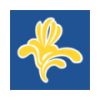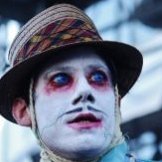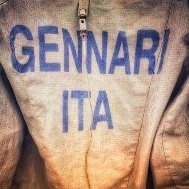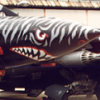Search the Community
Showing results for tags 'Delfin'.
-
Source: https://www.modelarovo.cz/l-29-delfin-1-https://www.modelarovo.cz/l-29-delfin-1-72-kovozavody-prostejov/ "First traditional for you in close cooperation with AMK and MN modeler prepared for the end of April a kit of this beautiful machine in 1/72 scale. For KP the Delfín is an icon , the company’s first kit and the beginning of a whole pleiad of beautiful models continuing to this day. Originally we had in 3D CAD-CAM preparation our brand new model , but thanks to the offer of the above mentioned companies we finally agreed to buy nice mouldings from AMK company for which we are very grateful. Nevertheless, we used part of our 3D designs to produce new frames for the L-29R, L-29RS and single-seat aerobatic L-29A versions, which will suitably extend the original kit with other versions of the Delfín that are currently missing on the market. As always, there will be several covers and decal versions , so everyone interested in this kit can choose. We present you the first pictures from our „court“ painters Jaroslav Velc (the picture was originally created for our 1/32 model, which was resold to the cooperating company FLY together with Arad 96/Avia C-2) and Carlos Alonso from Spain. The models will be available at the beginning of May at all good retailers and E-shops for around 14.20,- Euro. We believe that this info will please those interested in Czechoslovak aviation and I can promise that this is not the last „piece“ of cooperation of the above mentioned companies. Important notice!!! Now in May we will release only the basic model of L-29 – AMK mouldings. L-29R, L-29RS and the single-seat aerobatic L-29A will be released during this year’s holidays!!!" V.P.
- 12 replies
-
- 7
-

-
спасибо Лавре́нтий ! Source: http://scalemodels.ru/modules/forum/viewtopic_t_48220_start_100.html After the 1/48th kit (http://www.britmodeller.com/forums/index.php?/topic/234934843-148-aero-l-29-delfin-by-avantgarde-model-kits-released/), AMK should release (in December 2015?) a 1/72nd Aero L-29 Delfin. To be followed. V.P.
- 85 replies
-
- AvantGarde Model Kits
- Delfin
-
(and 1 more)
Tagged with:
-
Aero L-29 Delfin – Warpaint #134 Guideline Publications The Aero L-29 Delfin started life in early 1950s Czechoslovakia as a trainer requirement for their own forces, but with a view to acquiring additional sales from overseas. They intended to use an indigenous engine, but the development of that went on for an extended period, with smuggled British engines used in the interim due to similar performance characteristics to what was expected from the M701 once its troubles were resolved. In order to widen the market, they sought assistance and allowed input from their Soviet neighbours, eventually competing with a Polish and a Russian design to gain the contract for the standard Soviet trainer, something that wasn’t initially envisaged. Despite some corruption and favouritism by various parties, the Polish TS-11 dropped out and went on to have a successful career elsewhere as a trainer, and the Russian Yak-104 too was side-lined after yet more skulduggery and accusations thereof. This left the field clear for the Delfin, which had been designed from outset accommodate basic weapons carriage that would widen its appeal further, although it did make for a heavier airframe that gave its detractors ammunition during the in-fighting. The type went on to become a successful aircraft thanks to the forward-thinking of its designers, and the ready market amongst the Soviet umbrella and its allies, leading to a total of over 3,600 airframes being made into the early 70s, when it was replaced by another Aero product, the dart-like L-39, which is a firm favourite at airshows wherever it attends. The number of overseas buyers of the type was impressive, with some airframes seeing ownership by two or three countries over the years, thanks to a long service life that was a contributory factor to the aircraft winning the competition in the first place. As late as 2014, break-away areas in Ukraine were seen to be showing off L-29s as part of their nascent air forces, although whether these aircraft were capable of flight was up for debate, as at least one had been in civilian hands beforehand and was probably unable to fly. The Book The book by author Jakub Fojtík Ph.D is in the usual Warpaint format of portrait A4(ish) with a soft card cover but for the time being at least, with higher page counts of recent editions, it utilises a perfect binding instead of the usual pair of staples to accommodate the genuine total of 68 pages plus content printed on the four sides of the glossy covers, including a centre-page spread of plans in 1:72, penned by Petr Kolmann. The initial section details the birth of the type in great detail, with some interesting titbits of information included, then the subsequent pages detail the numerous foreign and domestic operators throughout the rest of the book, alphabetically sorted. Many of the photos are in colour, with some from the many overseas operators such as Iraq and Uganda as well as the usual official sources and historical records that were kept by the developers and manufacturers. The pages include a lot of useful photos with informative captions of aircraft on the apron, on the field, in the air, during trials, and even a few photos of the short-lived reconnaissance variant the L-29R, and the single-seat aerobatic L-29A of which only two were made. The Profiles section shows a range of colours in which the type was painted, including some of the more colourful schemes such as the green and black camouflaged Czechoslovak airframe, and the yellow and black tiger stripe scheme that would make for a fun model that taxes your airbrushing skills. My favourite variant is usually the slightly weird one, but the Delfin wasn’t overly burdened with physical differences, maybe because they got it pretty much right the first time, or perhaps because the aircraft had little potential for alteration to other roles. The main two have already been mentioned, and while the single-seater is fairly visibly different, the L-29R was a subtle variant, some of which were even converted back after the extra weight was found to be burning through the flight hours far too quickly, and fracturing the wing spars. They kept their fairings, probably because it would have cost more to remove them and replace the missing skin for very little benefit. The In Detail section is an interesting look at the aircraft at close range that spans three pages, and has a world map showing where the Delfin got to during its career. While it is heavily biased toward the area around the Soviet Union, it certainly got around. Conclusion The Warpaint series always gets a thumbs-up due to their consistent layout and quality. This is an excellent book that will see plenty of use by anyone interest in, or in building this interesting Soviet era trainer that is also a pleasant-looking aircraft. I built one myself a few years ago, and am tempted by one of the special schemes, if only I didn’t have so many other kits waiting for my attention! Note: You can buy either the traditional physical version of the book by following the link below, or the digital version if you’re more modern and forward thinking, or have limited storage space. Digital reference is starting to grow on me. Very highly recommended. Review sample courtesy of
-
In the framework of its 50th anniversary celebrations Kovozávody Prostějov (KP) is to release in cooperation with HpH/Infinity Models a 1/32nd plastic injected Aero L-29 Delfin kit - ref. The first ever produced kit from Kovozávody Prostějov (KP) was in 1970 a 1/72nd Aero L-29 Delfin. Source: http://www.modelarovo.cz/tiskova-zprava-kp-k-50-vyroci-zahajeni-prodeje-modelu-l-29/ Box art The base for designing this new kit being of course the HpH's 1/32nd Aero L- 29 Delfin resin kit. https://www.scalemates.com/kits/hph-models-hph-32002r-aero-l-29-delfin--157983 V.P.
-
Now that I my upcoming Study Abroad has been cancelled, I'm planning to soon start the AMK 1/72 L-29, using the following: AMK 1/72 Kit Quickboost Pylons and L-29R Conversion Aires Cockpit Set Reskit Wheels Extra-Tech PE Set (Meant for the KP Kit, I'll use this for the gear bay covers and a few assorted levers and details.) Print Scale Decals Eduard Masks I considered also getting the Aires Control Surfaces and Pitot Tubes, but the included parts for those are just fine. My question arises from Quickboost offering both an R and an RS conversion set. The R includes new wingtip tanks and a camera pod, and the RS contains a very similar camera pod, but lacks the tip tanks. From what I have found so far, the R model was an L-29 with the rear seat removed and camera's mounted vertically in that position, but I the photos I have seen so far don't seem to show the seat removed and I haven't noticed any differences in the camera pods. Does anyone know more? Thanks, Tweener
-
Hi all. This is the 3rd completed one for the year. It's the Weekend edition of the Eduard 1/48 L-29 Delfin which is the AMK kit in disguise. The markings are one of the options in the box and I can assure that all 184 decals that make up the tiger stripes are present, count 'em! It was bare plastic a week and a half ago so approximately 10 days to complete it. Four of those were dedicated to decaling. The paint is Mr Color #4 yellow. The changes I made are the Master pitot probes and the Quickboost seats. I also replaced the braces behind the front seat with wire. I kept the canopy closed as the open canopy would ruin the simple lines of the airframe. So, interesting airframe...no. Interesting decals scheme...yes. Would I recommend the kit...yes, but a different scheme. Hope you like it. Mick
- 14 replies
-
- 22
-

-
- Delfin
- Tiger Stripes
-
(and 1 more)
Tagged with:
-
Aero L-29 Delfín (8464) 1:48 Eduard Weekend Edition Designed in Czechoslovakia in the 1960s, the Delfín was a two-seat military jet trainer used by the Warsaw Pact countries that is still in operation with some countries and in private hands today. It is simple in construction and cheap to operate, with a good safety record due to its pleasant handling characteristics, which endears it to the cost conscious and anyone wishing to stay alive. Over 3,600 were made, and due to their use by the Soviet Air Force, they were dubbed "Maya" under the NATO reporting coding. As well as flight training, the Delfín is equipped with hard points to allow it to be used in weapons training, which has inevitably led to it being used in action on occasion most notably during the Yom Kippur war, but also in other "low level" conflicts over time. It has been gradually replaced by the L-39 Albatros, but still finds use with private operators for air racing, experimental flights as well as joy-rides. The Sasol Tigers in South Africa fly the L-29 as an acrobatic team, and the low cost of ownership has made it a popular entry into jet-powered flying. The Kit As well as making their own kits, Eduard are making a name for releasing other manufacturers kits with their own Eduard parts and decals. This is such a kit using the AMK plastic. In the box there are five sprues of medium grey styrene, a small sprue of clear parts, and a glossy instruction manual with painting instructions on the rear pages. The tooling is good quality, with perhaps only the engraved panel lines appearing a shade wider than I would have liked, although by the time they are primed and painted, it probably won't notice. Construction starts with the cockpit, and a pair of ejection seats are built up from a two-piece frame to which the seat cushion and back cushions are added. Belts are provided on the decal sheet. The rear-seat has the canopy breaker framework removed, so make sure you place it in the rear cockpit once you're ready. The cockpit is a single tub into which the central bulkhead and instrument panels fit, along with the front coaming and two control columns that reflect its trainer status. Decals are supplied for the instrument panels. A pair of ejection seat rails are added to the back of each cockpit area, the rear set being cut shorter and adding a pair of shrouds around the rear-seater's shoulders. The nose gear bay has to be built up next along with the single engine exhaust, as both of them are trapped inside the fuselage with the cockpit. The exhausts have a fine pen-nib tip to them, which is well moulded, with the exhaust trunking made from two halves and a rear-face to the engine itself at the end. The cockpit sidewalls are moulded into the fuselage halves, and are well done with a single extra part added to each side before the cockpit is installed. The nose-gear bay is also detailed with ribbing, plus various pressure bottle that add some extra interest and colour, as they are painted light blue. The fuselage closes around the three assemblies, with the cockpit rear having an insert behind the rear seat, and the engine supported by moulded in bulkheads with cut-outs that ensure it is correctly seated. Eduard's bunny pops up to remind you to add nose weight under the cockpit to prevent a tail-sitter, but if you plan on leaving the nose bay closed, you can add more there too. A clear blast-screen fits between the two cockpits, framed by a very delicate hoop that is built into the fuselage halves, so take care handling! The wings have the flap sections removed, and if you plan on modelling them retracted, all you need to do is remove the actuator rods from them and glue them in place. If you plan on having them deployed, leave the rods on.The intakes on the Delfín are in the wing roots and are simply curved into a central tunnel to feed the engine. The intake lips are moulded into the wing roots, and a curved part with splitter is then added into the gap behind them. The splitter plate is added to the sides of the fuselage, and a shield-shaped hole in the side of the fuselage allows the intake trunking to disappear into the darkness never to be seen again. Pitot probes are moulded into the wing halves, and I'm probably going to knock those off with my clumsiness too. A clear landing light is added to the underside of the port wing and formation lights are added to both wing tips, after which the wings are glued to the fuselage, with surprisingly short tabs but a large mating surface that make it wise to check everything it aligned properly before you leave the wings to set up. The main gear bays are moulded into upper wing skins, and detail is good, although some additional wiring would probably add more life. The mouldings are quite large, but there don't seem to have been any sink-marks on the upper surface, which is nice to see. There are a few shallow sink marks on the flaps though, but as they're on a flat surface, that shouldn't take more than a few minutes to resolve. The L-29 has a T-tail, which has a single full-width elevator, which is represented as a separate part, as is the rudder, which is made up from separate halves. This gives plenty of options for offset surfaces that give the aircraft a more candid look once complete. The landing gear parts are well detailed, with twin brake hoses running down the main legs, separate hubs to the main wheels, and retraction jacks that key neatly into both gear legs and the bays. The nose gear has a Y-shaped location/pivot point, plus a long retraction jack that extends high up into the nose. Gear bay doors are also well detailed, with the outer mains captive to the gear legs and inner doors hinging toward the centre line with retraction jacks added. The nose gear bay has a sliding rear door that sits flush with the underside of the fuselage, and a front door that hinges forward to deploy the gear, and then closes behind it. The Delfín has scabbed-on air-brakes that sit on the fuselage skin, and hinge out to slow the aircraft down using retraction jacks that sit within a small bay on the side of the fuselage. This is represented well by a pair of styrene parts with moulded in lightening holes on the inner face that sneakily hide some well-placed ejector pin marks. There is a bit of flash here on my example, which I will cut off using a new blade on my scalpel, so nothing untoward. The hinges are PE parts that affix to the leading edge of the brakes, and slot into two small depressions on the side of the fuselage. A pair of drop-tanks are provided for the underwing plyons. The canopy and nose bay cover can be posed open or closed, with the nose bay cover hinging forward on a substantial tab. The canopy is supplied as a three-part arrangement, with a fixed windscreen glued to the front, a side-opening front canopy with optional retaining strap if you pose it open, and a sliding rear canopy with a small bulkhead behind the cockpit opening. All parts are well moulded with defined framework, and are crystal clear, so with careful masking and painting should perform well. Markings One of the main things for this weekend boxing is the decals. There is a large sheet for the Tiger Stripe markings, a smaller sheet with national markings; and a third sheet for the airframe stencils. Markings for two aircraft are provided; 2853, 1st Flight, 11th Fighter Regiment, Czech Republic, 1993 (The Tiger stripped airframe) 1928, 3rd Air Base Malacky, Slovakia, 1993 Conclusion A welcome release from Eduard of the great AMK plastic with some great decals. Highly recommended. Review sample courtesy of
-
Aero L-29 Delfín 1:48 Eduard ProfiPACK Designed in Czechoslovakia in the 1960s, the Delfín was a two-seat military jet trainer used by the Warsaw Pact countries that is still in operation with some countries and in private hands today. It is simple in construction and cheap to operate, with a good safety record due to its pleasant handling characteristics, which endears it to the cost conscious and anyone wishing to stay alive. Over 3,600 were made, and due to their use by the Soviet Air Force, they were dubbed "Maya" under the NATO reporting coding. As well as flight training, the Delfín is equipped with hard points to allow it to be used in weapons training, which has inevitably led to it being used in action on occasion most notably during the Yom Kippur war, but also in other "low level" conflicts over time. It has been gradually replaced by the L-39 Albatros, but still finds use with private operators for air racing, experimental flights as well as joy-rides. The Sasol Tigers in South Africa fly the L-29 as an acrobatic team, and the low cost of ownership has made it a popular entry into jet-powered flying. The Kit As well as making their own kits, Eduard are making a name for releasing other manufacturers kits with their own Eduard parts and decals. This is such a kit using the AMK plastic. In the box there are five sprues of medium grey styrene, a small sprue of clear parts, a Photo-Etch (PE) brass sheet, square decal sheet and a glossy instruction manual with painting instructions on the rear pages. The quality feel extended to the sprues, which are individually bagged in resealable clear foil bags, with the exception of the weapons sprues, which share a small bag. The tooling is good quality, with perhaps only the engraved panel lines appearing a shade wider than I would have liked, although by the time they are primed and painted, it probably won't notice. Construction starts with the cockpit, and a pair of ejection seats are built up from a two-piece frame to which the seat cushion and back cushions are added. Colour PE parts are added b Eduard if you wish to use them. The rear-seat has the canopy breaker framework removed, so make sure you place it in the rear cockpit once you're ready. The copckpit is a single tub into which the central bulkhead and instrument panels fit, along with the front coaming and two control columns that reflect its trainer status. Decals are supplied for the instrument panels, or you can use the newly supplied PE parts. New PE parts also replace the moulded in cockpit side details. A pair of ejection seat rails are added to the back of each cockpit area, the rear set being cut shorter and adding a pair of shrouds around the rear-seater's shoulders. The nose gear bay has to be built up next along with the single engine exhaust, as both of them are trapped inside the fuselage with the cockpit. The exhausts have a fine pen-nib tip to them, which is well moulded, with the exhaust trunking made from two halves and a rear-face to the engine itself at the end. The cockpit sidewalls are moulded into the fuselage halves, and are well done with a single extra part added to each side before the cockpit is installed. The nose-gear bay is also detailed with ribbing, plus various pressure bottle that add some extra interest and colour, as they are painted light blue. The fuselage closes around the three assemblies, with the cockpit rear having an insert behind the rear seat, and the engine supported by moulded in bulkheads with cut-outs that ensure it is correctly seated. Eduard's bunny pops up to remind you to add nose weight under the cockpit to prevent a tail-sitter, but if you plan on leaving the nose bay closed, you can add more there too. A clear blast-screen fits between the two cockpits, framed by a very delicate hoop that is built into the fuselage halves, so take care handling! The wings have the flap sections removed, and if you plan on modelling them retracted, all you need to do is remove the actuator rods from them and glue them in place. If you plan on having them deployed, leave the rods on.The intakes on the Delfín are in the wing roots and are simply curved into a central tunnel to feed the engine. The intake lips are moulded into the wing roots, and a curved part with splitter is then added into the gap behind them. The splitter plate is added to the sides of the fuselage, and a shield-shaped hole in the side of the fuselage allows the intake trunking to disappear into the darkness never to be seen again. Pitot probes are moulded into the wing halves, and I'm probably going to knock those off with my clumsiness too. A clear landing light is added to the underside of the port wing and formation lights are added to both wing tips, after which the wings are glued to the fuselage, with surprisingly short tabs but a large mating surface that make it wise to check everything it aligned properly before you leave the wings to set up. The main gear bays are moulded into upper wing skins, and detail is good, although some additional wiring would probably add more life. The mouldings are quite large, but there don't seem to have been any sink-marks on the upper surface, which is nice to see. There are a few shallow sink marks on the flaps though, but as they're on a flat surface, that shouldn't take more than a few minutes to resolve. The L-29 has a T-tail, which has a single full-width elevator, which is represented as a separate part, as is the rudder, which is made up from separate halves. This gives plenty of options for offset surfaces that give the aircraft a more candid look once complete. The landing gear parts are well detailed, with twin brake hoses running down the main legs, separate hubs to the main wheels, and retraction jacks that key neatly into both gear legs and the bays. The nose gear has a Y-shaped location/pivot point, plus a long retraction jack that extends high up into the nose. Gear bay doors are also well detailed, with the outer mains captive to the gear legs and inner doors hinging toward the centre line with retraction jacks added. The nose gear bay has a sliding rear door that sits flush with the underside of the fuselage, and a front door that hinges forward to deploy the gear, and then closes behind it. The Delfín has scabbed-on air-brakes that sit on the fuselage skin, and hinge out to slow the aircraft down using retraction jacks that sit within a small bay on the side of the fuselage. This is represented well by a pair of styrene parts with moulded in lightening holes on the inner face that sneakily hide some well-placed ejector pin marks. There is a bit of flash here on my example, which I will cut off using a new blade on my scalpel, so nothing untoward. The hinges are PE parts that affix to the leading edge of the brakes, and slot into two small depressions on the side of the fuselage. A pair of drop-tanks are provided for the underwing plyons. The canopy and nose bay cover can be posed open or closed, with the nose bay cover hinging forward on a substantial tab. The canopy is supplied as a three-part arrangement, with a fixed windscreen glued to the front, a side-opening front canopy with optional retaining strap if you pose it open, and a sliding rear canopy with a small bulkhead behind the cockpit opening. All parts are well moulded with defined framework, and are crystal clear, so with careful masking and painting should perform well. Markings The L-29 was used by a wide variety of operators, so the choice of marking is quite wide. Eduard give us a choice of 5 schemes. There is a main decal sheet, with a large stencil sheet as stencils vary between the marking options. There is also a small supplemental sheet. All decals are printed in house and should cause no problems. 3246, 3rd Flight, 1. Fighter Regiment, Planá Air Base, Czechoslovakia, 1969-1970 4902, 11. Fighter Regiment, Žatec, Czech Republic, 1993 79, Tactical Air Services, N179EP, Reno AFB, United States of America, 2009 1597, Egyptian Air Force, Bilbais, Arab Republic of Egypt, Late Eighties 3250, International Fighter Pilots Academy , Košice, Czech and Slovak Federative Republic, 1993 Conclusion A welcome release from Eduard of the great AMK plastic with some nice Eduard additions. Highly recommended. Review sample courtesy of
-
Next AvantGarde Model Kits aircraft - after the Kfir/Mirage III/V family http://www.britmodeller.com/forums/index.php?/topic/234925006-148th-iai-kfir-c2c7-by-avantgarde-model-kits-release-february-2013-sprues-pics/ - will be a 1/48th Aero L-29 Delfin. Source: http://www.facebook.com/media/set/?set=a.605283516155376.156032.436005436416519&type=1 Excellent choice. Served with over 25 nations and over 3600 built. The death announcement for the only 1/48th L-29 Delfin kit, the resin one from Planet Models. http://modelingmadness.com/scott/korean/preview/planet/124preview.htm V.P.
- 36 replies
-
- AvantGarde Model Kits
- Delfin
-
(and 1 more)
Tagged with:
-
L-29 Delfin - for AMK Kit 1:72 Eduard The AMK L-29 Defin is a great little kit, we recently reviewed it here. This set from Eduard provides one colour fret on nickel plated metal and one brass fret. The coloured fret provides mainly cockpit details with new instrument panels side consoles, new seatbelts and ejection seat parts. The brass fret provides a new seat pan, interior for the cockpit including lower sides, details for the canopy glazing, instrument panel coamings, rudder pedals, rear cockpit bulkhead; and a complete new section for nose including decking and boxes housed there. For the main undercarriage bays there are new cable runs, interior faces, and gear bay doors. There are also cable runs for the main undercarriage legs. New flap well interiors are provided as well as new ends for the flaps. Lastly a whole host of exterior panels and aerials are provided as well as the soviet block three pronged IFF antennas. Conclusion These frets should enhance an already great kit. Highly Recommended. Review sample courtesy of
-
Aero L-29 Delfín 1:72 AdvantGarde Model Kits Designed in Czechoslovakia in the 1960s, the Delfín was a two-seat military jet trainer used by the Warsaw Pact countries that is still in operation with some countries and in private hands today. It is simple in construction and cheap to operate, with a good safety record due to its pleasant handling characteristics, which endears it to the cost conscious and anyone wishing to stay alive. Over 3,600 were made, and due to their use by the Soviet Air Force, they were dubbed "Maya" under the NATO reporting coding. As well as flight training, the Delfín is equipped with hard points to allow it to be used in weapons training, which has inevitably led to it being used in action on occasion most notably during the Yom Kippur war, but also in other "low level" conflicts over time. It has been gradually replaced by the L-39 Albatros, but still finds use with private operators for air racing, experimental flights as well as joy-rides. The Sasol Tigers in South Africa fly the L-29 as an acrobatic team, and the low cost of ownership has made it a popular entry into jet-powered flying. The Kit It is good to see AMK reducing their excellent 1.48 kit down for modellers of the one true scale The kit arrives on two main sprues of grey plastic, with a further double small sprue for the tanks & seats. There is a clear sprue with separate front/rear canopies, and a small photo-etched fret. The quality of the moulds is very good. All the parts are crisp with no flash or moulding problems visible. All the panel lines are finely recessed and the moulded on details are very good. Construction starts in the cockpit. The two seats are constructed, these have five parts each and for the scale are very good. The instrument panels are added to the cockpit tub, along with the coamings and control columns. Instruments are provided as decals. The seat rails are then installed into the cockpit tub followed by the already completed seats. Next up the nose landing gear bay is assembled along with the four part exhaust. Once these sub assemblies are complete they along with the cockpit tub can be installed into the main fuselage. The rear decking behind the cockpit is added and then the main fuselage can be closed up. Nest up are the wings. These are midway up the fuselage so you have separate left/right wings to complete. They can be modelled with the flaps up or down. If doing the flaps down then that where the photo-etched parts come into play as they provide the complex interior to the flaps. As well as these the intake parts must be placed into the wings before they are closed up. Once made the wings can be joined to the fuselage. Various antenna are then added to the fuselage. Many of these are on the centre line and it shows attention to detail that they are added as additional parts rather than being moulded onto the fuselage halves. The horizontal stabiliser is then made up and added along with the rudder. The last major step is the construction of the landing gear. The front wheel is one part added to its leg, and the rear wheels consist of separate tyres and hubs. These are added to the legs along with the outer gear door parts. The rear airbrakes can be modelled open or closed, and the underwing tanks added. Lastly the front nose cover is added along with the canopies. Markings The L-29 was used by a wide variety of operators, so the choice of marking is quite wide. AMK have elected to offer USSR Air Force Red 07 silver with red wing & tail tips and fuselage band. Czechoslovak 1978 overall silver. Czechoslovak late1970's overall silver with red fuselage band. Egyptian Air Force College Bilbeis. Sand/brown/green over red undersides. German Democratic Republic Air Force 338 green/brown camouflage over light blue undersides. Ukraine - Aeroclub of Kharkiv 2010 (as box art). The decals are glossy, in register and look colour dense. The carrier film appears minimal. Conclusion This is a great little kit from AMK. Highly recommended. We need more great kits like this in 1.72. Review sample courtesy of
-
After MiG, i'll start a new project: the AMK's L-29 Delfin in egypt color. I will start working on it on monday, now presentation time. The box: The kt is a jewel: great detail, smart design, small amount of part. I think it can give me a lot of fun! Well done, AMK! The kit's decals sheet is beatiful, but i choose the HAD's offer. That's because i really love the "Nile" camo and the red undersurfaces give the right touch of color. I heard about a lack of photography evidence about the red undersurfaces; btw, i really like it and i think i will do this scheme. ciao Ale
-
Kovozávody Prostějov is to release a new tool 1/72nd Aero L-29 Delfin kit - ref. Source: http://www.kovozavody.cz/jarni-ofenziva-u-kp/ AMK new tool L-29 Delfin is also in progress: http://www.britmodeller.com/forums/index.php?/topic/234983875-172-aero-l-29-delfin-by-avantgarde-model-kits-amk-cad-release-december-2015/ V.P.
-
Merry Christmas to all B.M. members and their family Final build of the year for me and quite a productive one with this making number 14 Cant go into too much details as this will feature in a future issue of SAM, so only posting a few teaser shots for you. Aircraft depicted is from the Slovakian Air force and uses the kit Decals. Finished with Gunze and Tamiya paints. Weathering was kept to a minimum as reference photos seem to suggest a clean appearance of these airframes even after retirement. Seems there might be a problem with some not being able to see the photo's just in case here are the direct links, http://imageshack.com/a/img903/811/kwOpHe.jpg http://imageshack.com/a/img908/7597/FuFcSy.jpg As usual comments welcome, Thanks for Looking Rick G.
- 25 replies
-
- 26
-

-
Hello guys! I was starting this no. 001 kit of the recently deceased KP some weeks ago. One piece canopy, raised horrible panel lines and no fitting at all. Cockpit seats are "stoled" from a MiG29. I fully erased all those panel lines, I will left him nude without engraving. Sorry for my English. Unfortunately I'm posting from my phone and I cannot upload any photos.
-
Jach + Mark I 1/144 Aero L-29 Delfín (Maya) source: http://modelforum.cz/viewtopic.php?f=298&t=32253&start=495#p1645271



.thumb.jpg.3d6eff3e2f6cc042679bca864bcb2b1a.jpg)






